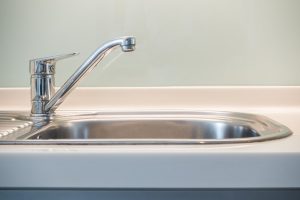Techniques for Halting Everyday Plumbing Problems in Your Home
Techniques for Halting Everyday Plumbing Problems in Your Home
Blog Article
The content on the next paragraphs involving 6 Common Plumbing Problems and How to Fix Them is fairly intriguing. Give it a go and make your own personal conclusions.

Introduction
Maintaining a functional plumbing system is important for a comfortable home. By taking preventive measures, you can prevent typical plumbing problems that might interrupt your life and incur costly fixings.
Normal Maintenance Checks
Regularly evaluating your plumbing system is crucial for determining potential concerns before they rise. Examine pipes, taps, toilets, and devices for leaks, deterioration, or indications of deterioration.
See What You Flush
Be mindful of what you purge down your toilets. Avoid flushing things such as wipes, cotton balls, hygienic items, and paper towels, as these can create clogs and back-ups in your pipelines.
Proper Disposal of Oil and Food Waste
Dispose of oil, oils, and food scraps properly to avoid buildup in your pipes. Stay clear of putting grease down the tubes, as it can strengthen and trigger clogs. Make use of a filter in your kitchen sink to capture food bits and empty it routinely.
Screen Water Pressure
Keep an eye on your water pressure to stop anxiety on your pipelines and devices. High water pressure can lead to leaks and damage with time. Consider setting up a stress regulatory authority to maintain ideal water stress throughout your home.
Shield Pipes from Freezing
Throughout cold weather, take steps to avoid your pipes from freezing. Protect subjected pipelines, specifically those in unheated locations like cellars and attic rooms. Permit taps to trickle throughout freezing temperatures to prevent water from freezing in the pipelines.
Address Leakages Without Delay
Deal with any type of leakages or leaks as quickly as you observe them. Also small leaks can waste water and trigger damage to your home gradually. Tighten loose fittings or replace worn-out seals to prevent leakages from getting worse.
Be Mild with Plumbing Components
Stay clear of utilizing extreme force when operating plumbing fixtures such as taps and shutoffs. Misuse can trigger deterioration, causing leaks and other malfunctions.
Regular Drainpipe Cleaning
Schedule regular drain cleansing to avoid buildup of hair, soap scum, and other particles. Use a drainpipe snake or enzymatic cleaner to eliminate obstructions and preserve smooth drainage.
Mount Water Softeners
Take into consideration mounting a water softener if you have difficult water. Difficult water can trigger mineral buildup in your pipes and appliances, resulting in decreased water circulation and efficiency.
Enlighten Family Members
Inform everyone in your house regarding proper plumbing techniques. Show them what ought to and shouldn't be purged or thrown away down the tubes to prevent preventable plumbing problems.
Verdict
Stopping common plumbing problems in your house needs diligence and routine maintenance. By adhering to these preventive measures, you can make certain that your plumbing system operates efficiently and avoid expensive repairs in the future.
Expert Tips for Preventing Common Plumbing Issues
Keep Drains Clear and Functional
Regularly clean drain covers and hair-catching devices to eliminate debris and prevent buildup. Avoid disposing of grease, oil, or coffee grounds down your drains, as they can congeal and accumulate over time, creating obstructions. Consider using a biodegradable drain cleaner periodically to break down organic matter and maintain clear pipes. Prevent and Identify Leaks Early
Regularly inspect visible plumbing connections, pipes, and fixtures for signs of moisture or corrosion. Fix loose connections or replace damaged components as needed. Install water leak sensors in high-risk areas such as under sinks, near water heaters, and around washing machines to provide early warning of potential leaks. Monitor your water bill for sudden increases in usage, which may indicate a hidden water leak. Protect Plumbing from Freezing Temperatures
Allow faucets to drip slightly during extremely cold weather to prevent freezing and pressure buildup inside the pipes. Seal gaps and openings in walls, doors, and windows near plumbing to prevent drafts from reaching your pipes. Maintain Optimal Water Heater Performance
Schedule annual professional maintenance of your water heater, including checking pressure-relief valves, flushing sediment buildup, and inspecting for corrosion or leaks. Maintain the manufacturer-recommended temperature setting, typically around 120°F (49°C), to optimize energy efficiency and prevent scalding. Consider installing an expansion tank in your system if you have a closed-loop water supply, which prevents excessive pressure buildup and potential water heater failure. https://www.climatecontrolkc.com/blog/plumbing/tips-for-preventing-plumbing-issues/

Hopefully you liked our section on Expert Tips for Preventing Common Plumbing Issues. Thank you so much for taking time to browse our content. Remember to pause to share this blog if you appreciated it. I take joy in your readership.
Call Today Report this page